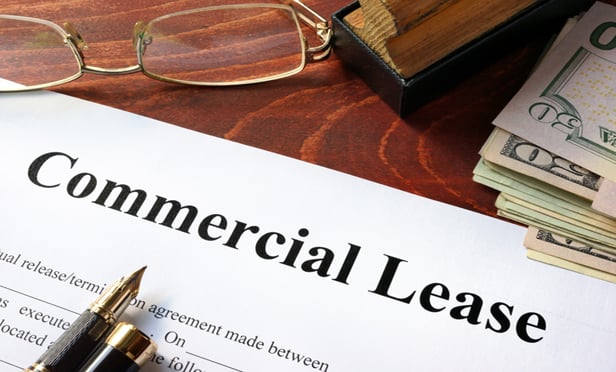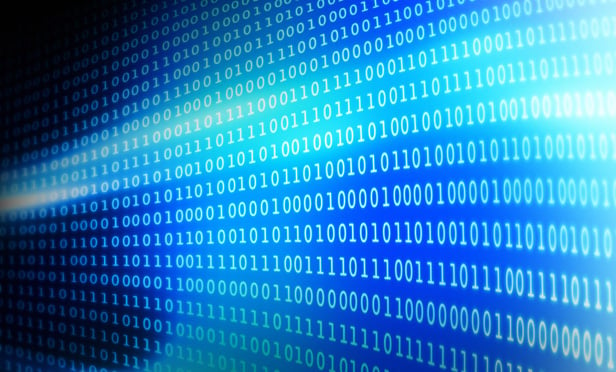Features

The Top 5 Law Firm Business Development Trends of 2023
The legal industry has undergone significant changes over the years with advancements in technology, shifting client expectations and increased competition driving firms to adapt and evolve. And while legal marketing and business development departments have transformed over as well, there is still much room for improvement to capitalize on the tremendous talent that exists within these teams.
Features

Regulators Put Pressure On Fintech Platforms to Improve Customer Disclosures
Regulators cranking up scrutiny of digital-payment platforms after fund-access and customer service problems in recent years are now broadening their gaze into what happens if they collapse. That's placing additional pressure on these fintech platforms to improve customer disclosures and possibly even find new ways to backstop against potential insolvency.
Features

The Four Archetypes of a Defaulting Tenant and How to Handle Them
Every distressed tenant will have a different situation and story to tell. Each will have a different approach to handling its lease obligations. Following is a primer to help the commercial landlord prepare for the default conversation with the tenant by looking at the different potential types of defaulting tenants it may face and advice on how to handle each type.
Features

Blazing Saddles or Blazing Trails: e-Discovery vs. Forensic Data Collection — Unraveling the Critical Differences
Attorneys interested in legal technology, data security and e-discovery must grasp the critical differences between two essential methodologies: e-discovery and digital forensics. This article delves into the contrasting features of these methodologies to help attorneys who engage with legal technology better understand the significance of these differences.
Features

The Expanding Influence of Legal Operations: New Report Focuses on AI, CLM, and Law Department Transformation
Operations leaders are driving efficiencies, helping manage the growth of data, and harnessing the power of digital transformation to fuel business success while minimizing risk. They are also taking on greater roles and helping general counsel shape strategies that include embracing CLM, AI, and other tools to enhance the way their teams work.
Features

Assess Your Information Governance Practices In Light of DOJ and SEC Crackdown on Use of Personal Devices and Messaging Apps
This article summarizes the DOJ's recent guidance and the SEC's enforcement trends and priorities in this area, and it provides information governance best practices companies can implement now to ensure they are meeting regulators' expectations and recordkeeping rules.
Features

How the Supreme Court Saved the Internet from Itself: 'Gonzalez v. Google' and 'Twitter v. Taamneh'
The Internet is still standing, but the Supreme Court's reasoning in theGonzalez opinion remains perplexing. Gonzalez and Taamneh are a story about how the Supreme Court "saved" the Internet from itself, and the Court needed both cases to do so.
Features

Who Is Legally Liable for Internet AI Deepfake Content?
Most agree that internet deepfake (deep learning + fake) content is widespread and may be used to manipulate the public, attack personal rights, infringe intellectual property and cause personal data difficulties. However, little agreement exists as to who is legally liable for internet AI deepfake content.
Features

A Lawyer's System for Active Reading
Active reading comprises many daily tasks lawyers engage in, including highlighting, annotating, note taking, comparing and searching texts. It demands more than flipping or turning pages.
Features

Tips for Quickly and Effectively Responding to and Handling a Data Breach
Data breaches have become a common occurrence, and any organization, regardless of location, size and industry, can be attacked. This article summarizes key steps and recommendations for responding to and handling a data breach quickly and effectively.
Need Help?
- Prefer an IP authenticated environment? Request a transition or call 800-756-8993.
- Need other assistance? email Customer Service or call 1-877-256-2472.
MOST POPULAR STORIES
- Coverage Issues Stemming from Dry Cleaner Contamination SuitsIn recent years, there has been a growing number of dry cleaners claiming to be "organic," "green," or "eco-friendly." While that may be true with respect to some, many dry cleaners continue to use a cleaning method involving the use of a solvent called perchloroethylene, commonly known as perc. And, there seems to be an increasing number of lawsuits stemming from environmental problems associated with historic dry cleaning operations utilizing this chemical.Read More ›
- 'Insurable Interest' and the Scope of First-Party CoverageThis article reviews the fundamental underpinnings of the concept of insurable interest, and certain recent cases that have grappled with the scope of insurable interest and have articulated a more meaningful application of the concept to claims under first-party property policies.Read More ›
- The Flight to Quality and Workplace ExperienceThat the pace of change is "accelerating" is surely an understatement. What seemed almost a near certainty a year ago — that law firms would fully and permanently embrace work-from-home — is experiencing a seeming reversal. While many firms have, in fact, embraced hybrid operations, the meaning of hybrid has evolved from "office optional," to an average required 2 days a week, to now many firms coming out with four-day work week mandates — this time, with teeth.Read More ›
- AI or Not To AI: Observations from Legalweek NY 2023This year at Legalweek, there was little doubt on what the annual takeaway topic would be. As much as I tried to avoid it for fear of beating the proverbial dead horse, it was impossible not to talk about generative AI, ChatGPT, and all that goes with it. Some fascinating discussions were had and many aspects of AI were uncovered.Read More ›
- The Powerful Impact of The Non-Foreclosure Notice of PendencyRPAPL ' 1331 and RPAPL ' 1403 Notices of Pendency are requisite elements for foreclosing a mortgage. <i>See, Chiarelli v. Kotsifos</i>, 5 A.D.3d 345 (a notice of pendency is a prerequisite to obtaining a judgment in a mortgage foreclosure action); <i>Campbell v. Smith</i>, 309 A.D.2d 581, 582 (a notice of pendency is required in a foreclosure action under RPAPL Article 13). In contrast, an ex parte CPLR Article 65 Notice of Pendency (the "Notice") is not required but it is a significant tool in an action claiming title to, or an interest in or the use or enjoyment of, another's land. The filer does not have to make a meritorious showing or post a bond. Article 65 provides mechanisms for the defendant-owner to vacate the Notice that caused an unilaterally imposed restraint on its realty. But, recent case law establishes the near futility of such efforts if the plaintiff has satisfied the minimal statutory requisites for filing the Notice.Read More ›
